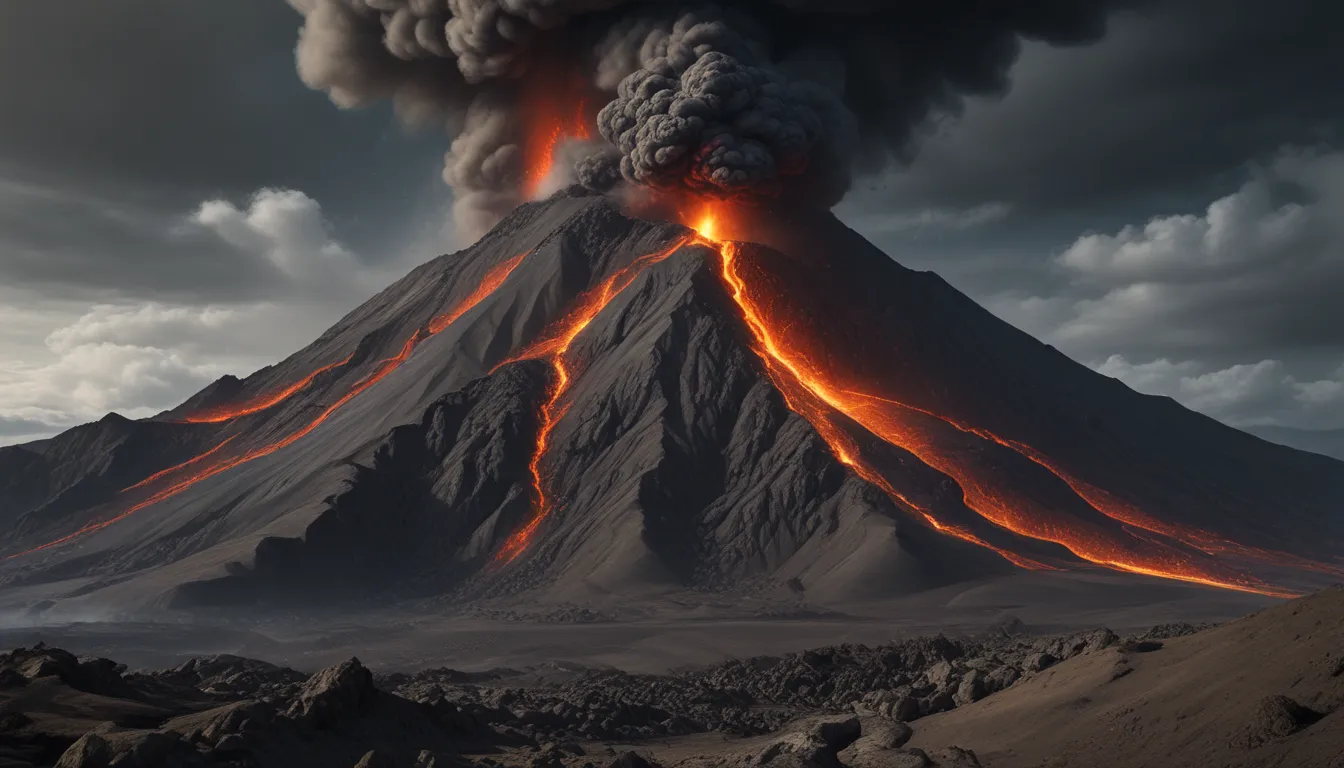A Note About Images: The images used in our articles are for illustration purposes only and may not exactly match the content. They are meant to engage readers, but the text should be relied upon for accurate information.
Welcome to the captivating world of volcanic ash, a powerful force of nature with widespread effects on our environment. From its composition to its impact on climate, ecosystems, and human health, volcanic ash holds fascinating secrets waiting to be uncovered. Join us as we explore 14 intriguing facts about this natural phenomenon, shedding light on its mesmerizing nature!
The Fascination Behind Volcanic Ash
Volcanic ash is unlike your ordinary dust – it’s a blend of tiny glass and rock particles that can travel vast distances, affecting climate and creating breathtaking sunsets. However, this powerful substance can also pose risks to human health and disrupt various aspects of life, from air travel to agriculture. Let’s delve deeper into the world of volcanic ash and discover its wonders.
The Composition of Volcanic Ash
Contrary to its name, volcanic ash is not derived from burned organic matter. Instead, it consists of minuscule particles of fragmented volcanic glass, minerals, and rock materials.
Size Matters: The Variety of Volcanic Ash Particles
Volcanic ash particles come in a range of sizes, from tiny 0.05 micrometers to several millimeters in diameter. The fine particles can remain airborne for extended periods, traveling thousands of kilometers from the eruption site.
The Impact on Air Travel
Volcanic ash is a significant threat to aviation due to its ability to damage aircraft engines and reduce visibility. Encountering volcanic ash clouds has led to engine failures and emergency landings in the past.
Effects on Agriculture
Volcanic ash settling on farmland can have both positive and negative effects. While it provides nutrients for plants, excessive deposition can clog irrigation systems, block sunlight, and hinder photosynthesis.
The Global Reach of Volcanic Ash
During volcanic eruptions, ash particles can reach high into the atmosphere, traveling across the globe in a matter of days or weeks. This global distribution can impact climate patterns and air quality worldwide.
Electrostatic Nature of Volcanic Ash
Volcanic ash particles can become electrostatically charged, adhering to surfaces, especially electronic equipment and power systems. This can lead to disruptions in telecommunication networks.
Impacts on Public Health
Inhaling volcanic ash can be harmful to human health, containing hazardous materials such as silica, sulfur dioxide, and heavy metals. Prolonged exposure can result in respiratory issues, eye and skin irritation, and cardiovascular problems.
Influence on Global Climate
When volcanic ash is released into the atmosphere during eruptions, it can reflect sunlight back into space, temporarily cooling the Earth’s climate. This can alter weather patterns and reduce global temperatures.
The Role in Fossil Preservation
Volcanic ash deposition can create a protective layer that helps preserve fossils, offering valuable insights into ancient life forms and ecosystems. This preservation aids in understanding prehistoric environments and species.
Creation of Volcanic Lightning
Explosive volcanic eruptions can generate lightning discharges within ash clouds, known as volcanic lightning. This stunning phenomenon adds to the intensity of the eruption with its visual displays.
Contribution to Soil Fertility
Moderate amounts of volcanic ash can enhance soil fertility by providing essential minerals and nutrients. This natural fertilization process benefits crop growth and vegetation.
Diverse Uses of Volcanic Ash
Volcanic ash has been utilized for centuries in various industries, including cement production, soil enhancement, pottery crafting, and cosmetic formulations. Its versatile properties make it a valuable resource in different applications.
Aesthetic Display: Spectacular Sunsets
When volcanic ash scatters high in the atmosphere, it scatters sunlight, creating vibrant and colorful sunsets. The ash particles act as a canvas, reflecting light to produce stunning displays of red, orange, and purple hues.
Transformation into Tuff
Accumulated layers of volcanic ash can compact and cement over time, forming a rock known as tuff. This rock type is found in various geological formations and is commonly used in construction.
Conclusion: Embracing the Majesty of Volcanic Ash
Volcanic ash embodies the raw power and beauty of nature, leaving a lasting impact on our environment and activities. Understanding its unique properties and diverse influences empowers us to prepare for volcanic eruptions and mitigate their effects effectively. Through ongoing research and monitoring, we unravel the complexities of volcanic ash and its role in shaping our planet’s dynamics.
As we delve deeper into the study of volcanic ash, we gain valuable insights into Earth’s geological history and the intricate processes that govern our planet. The exploration of volcanic ash not only enriches our understanding of volcanic activity but also deepens our appreciation for the symbiotic relationship between humans and the natural world.
FAQs: Unveiling the Mysteries of Volcanic Ash
- Q: What is volcanic ash?
-
A: Volcanic ash is a mixture of fine rock fragments, minerals, and volcanic glass expelled into the atmosphere during volcanic eruptions.
-
Q: How is volcanic ash formed?
-
A: Volcanic ash forms when magma, or molten rock, is explosively ejected from a volcano, fracturing into tiny particles due to extreme pressure and heat.
-
Q: What is the composition of volcanic ash?
-
A: Volcanic ash primarily consists of broken fragments of volcanic glass, crystalline minerals like feldspar and pyroxene, and small rock pieces.
-
Q: Can volcanic ash travel long distances?
-
A: Yes, volcanic ash can travel thousands of miles from the erupting volcano, carried by wind currents, impacting air travel and creating hazardous conditions in distant areas.
-
Q: How does volcanic ash impact the environment?
- A: Volcanic ash can affect the environment in various ways, from crop damage and water pollution to soil erosion, climate alterations, and the formation of new landforms.
Unlocking Nature’s Marvels with Volcanic Ash
Embark on a journey through the enchanting world of volcanic ash, where beauty and power intertwine to shape our planet’s landscapes and ecosystems. Each fact revealed about volcanic ash unravels a new layer of its mystique, offering profound insights into the forces of nature at play. As we marvel at the wonders of volcanic ash, let us embrace its significance in our world and continue to explore the intricate tapestry of Earth’s natural phenomena.






